The phenomenal attraction of the Las Vegas-based Consumer Electronics Show to the world’s motor industry is perfectly understandable, as it endures a period of tremendous sea-change. Producing a concept emergency vehicle of such a radical nature must be regarded as a feather in Hyundai’s cap.
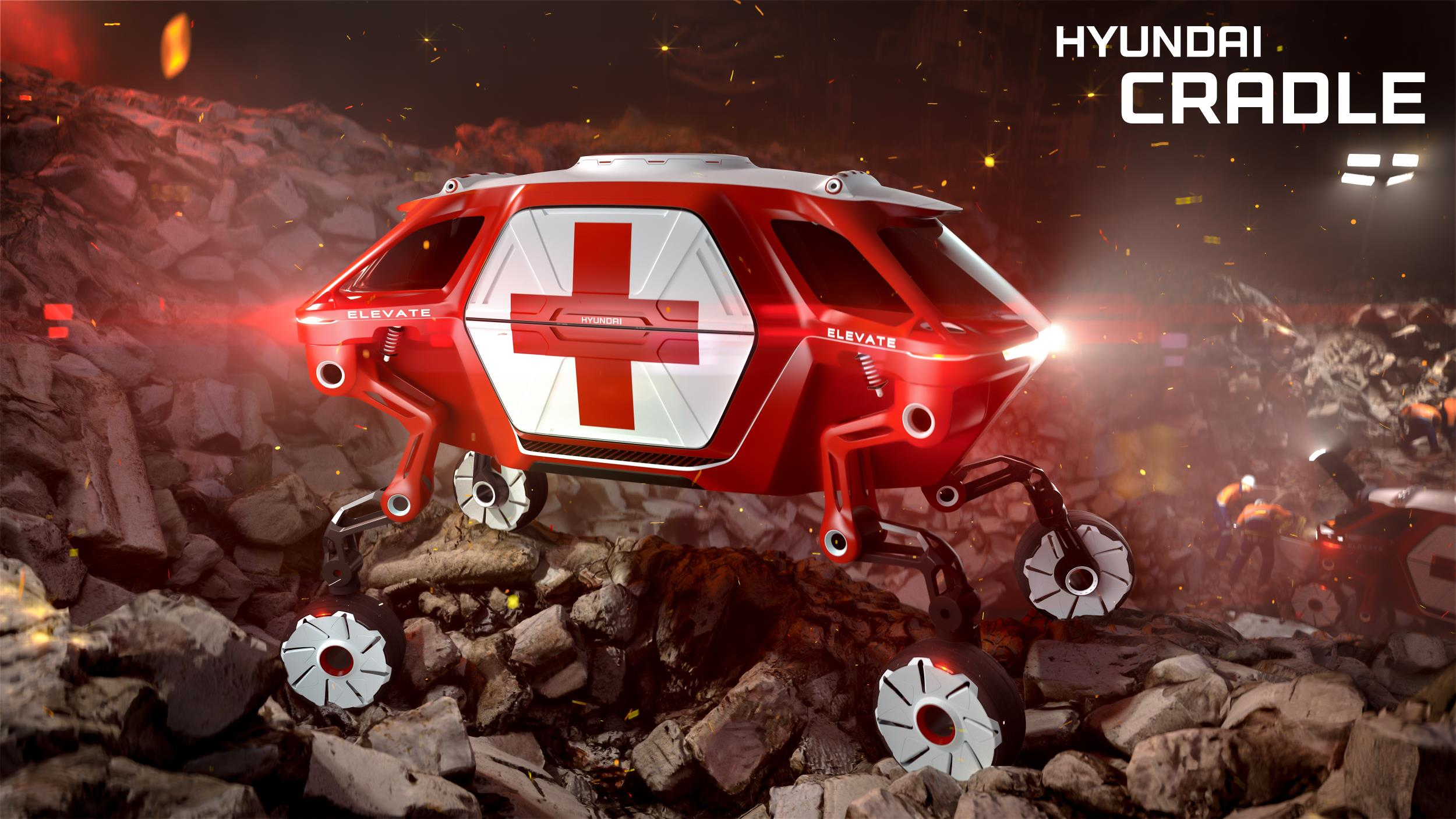
Any first responder will tell you that the first 72 hours following a natural disaster are the most crucial to saving lives. However, due to the nature of the disaster (forest fire, earthquake, hurricane, or tsunami), it can be difficult for search-and-rescue and humanitarian aid missions to reach and get immediate help to those in greatest need.
Rapid, resilient transportation for disaster assistance is what led Hyundai to develop the first-ever vehicle with moveable legs, rather than just wheels. Elevate is an Ultimate Mobility Vehicle (UMV), blending technology found in electric cars and robots, to allow it to traverse terrain beyond the limitations of even the most capable off-road vehicle. Current rescue vehicles can only deliver first responders to the edge of the debris field. They must travel the rest of the way on foot.
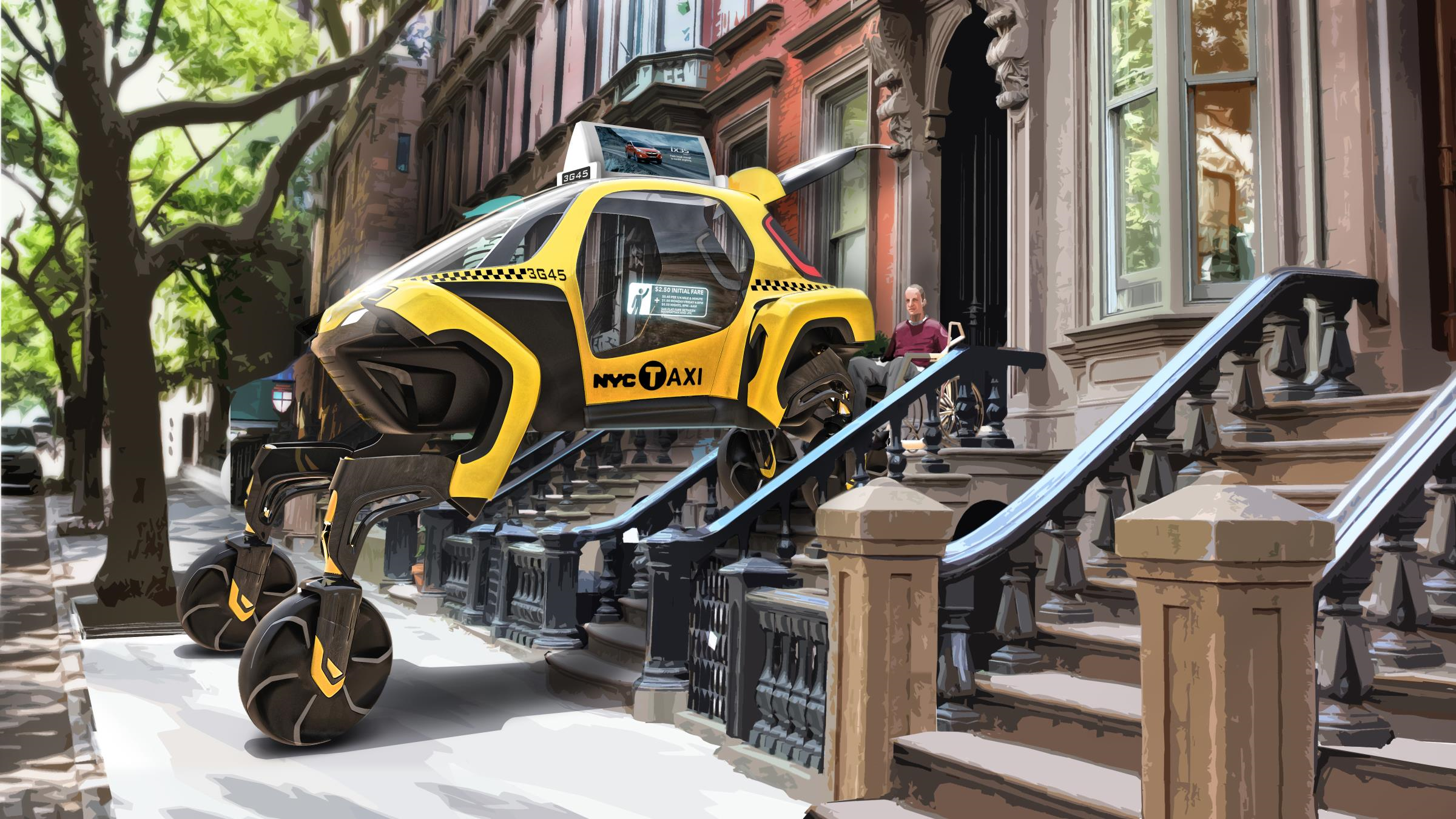
Elevate can drive to the scene and climb right over flood debris, or crumbled concrete. Yet, this goes well beyond emergency situations. People living with disabilities, without access to an ADA ramp, could hail an autonomous Hyundai cab that would walk up to their residence and load their wheelchair, or bed. The possibilities are huge
Based on a modular EV platform, with the capability to fit different bodies for specific situations, its robotic leg architecture has five degrees of freedom plus wheel hub propulsion motors featuring the latest in electric actuator technology. The design is capable of both mammalian and reptilian walking gaits, allowing it to move in any direction.
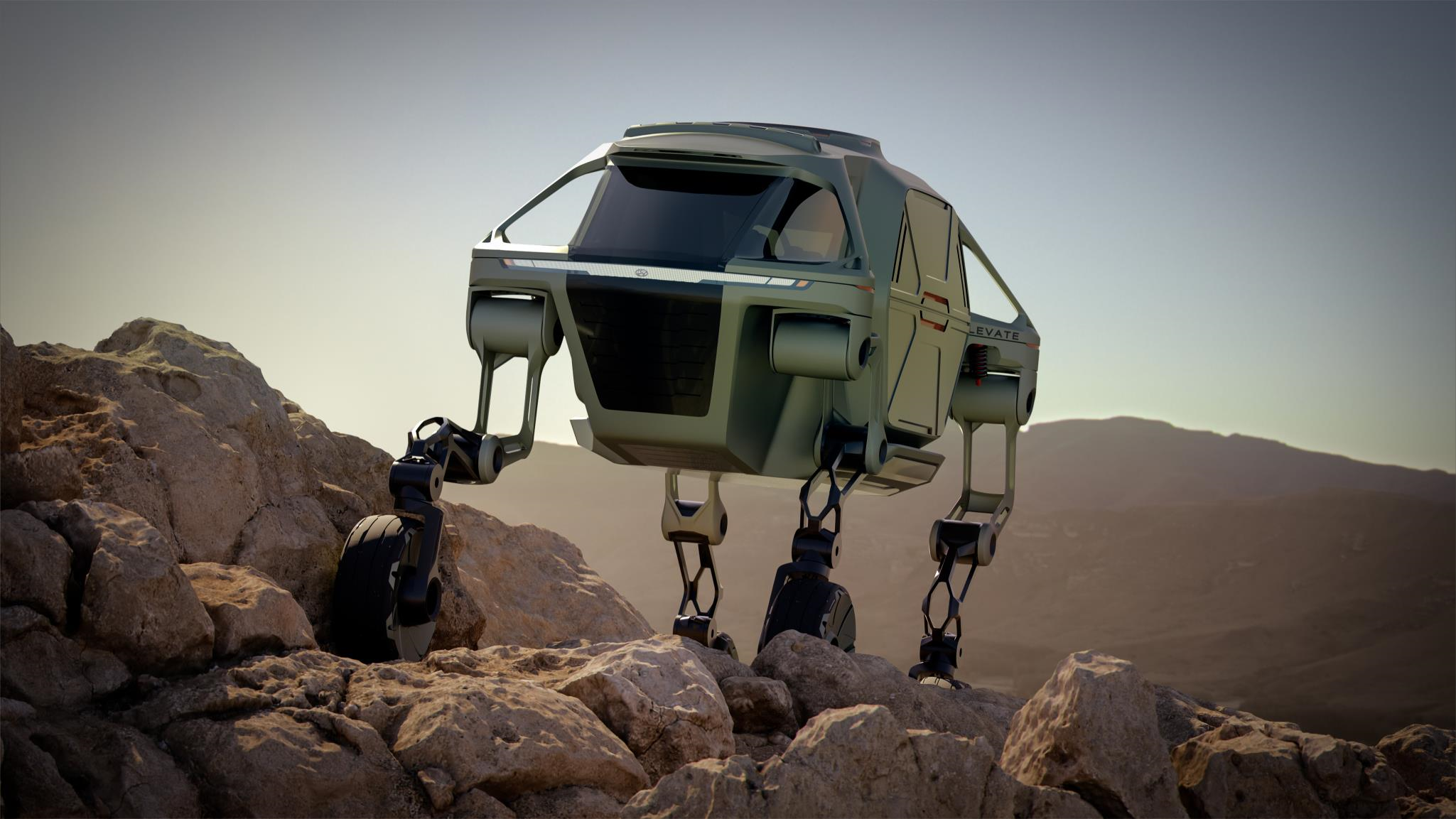
The legs also fold-up into a stowed drive-mode, where power to the joints is cut, and the use of an integrated passive suspension system maximises battery efficiency. This allows Elevate to drive at open-road speeds just like any other vehicle. However, no other car can climb a five-foot wall, step over a five-foot gap, walk over diverse terrain and achieve a 15-foot wide track, all while keeping its body and passengers completely level.
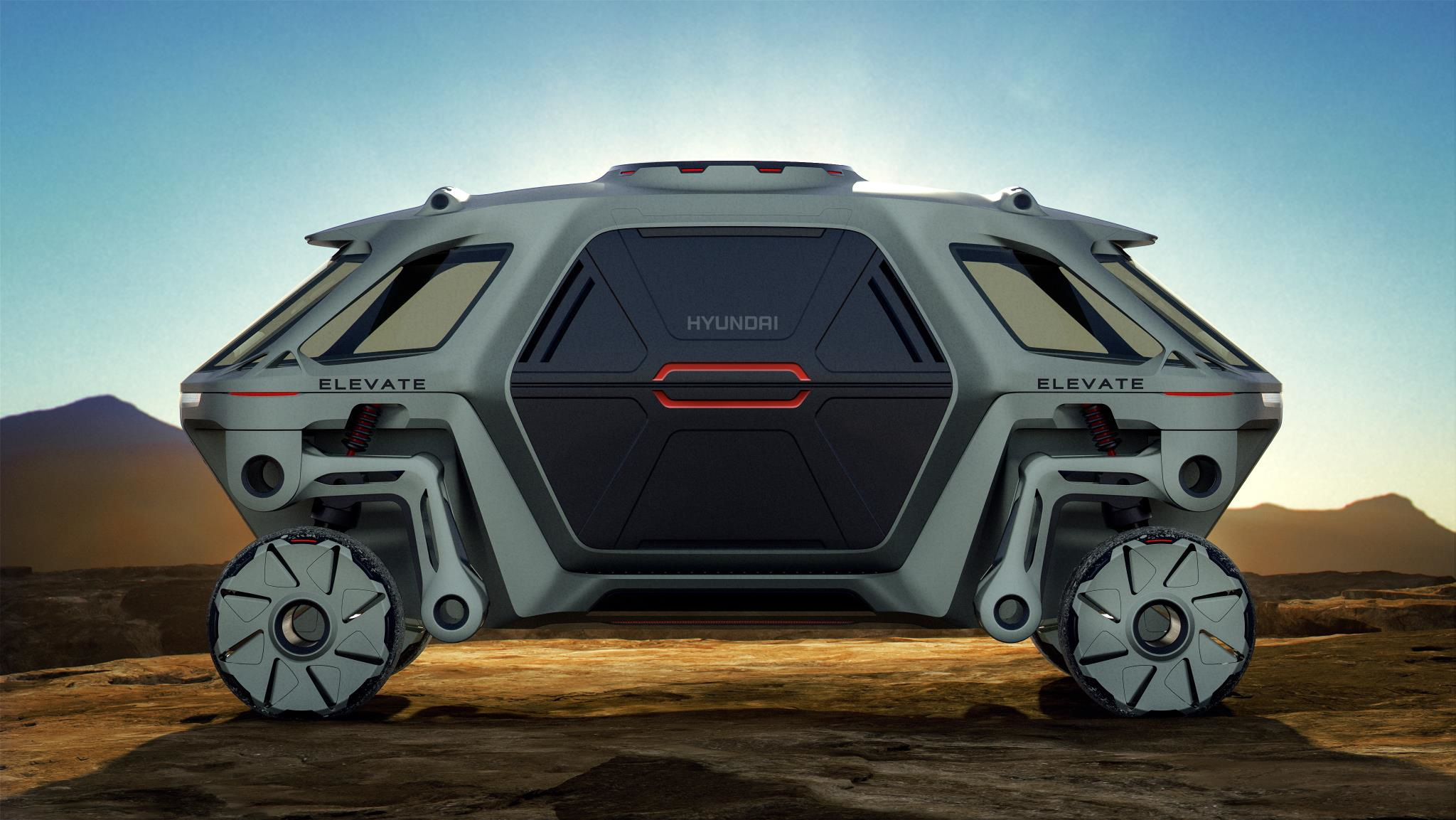
Inside the Elevate, passengers would experience a vehicle fully engineered to tackle the roughest terrain comfortably. Engineering enhancements include:
- Robotic legs with five degrees of freedom plus in-wheel propulsion
- Ability to walk in mammalian and reptilian style gaits, for omnidirectional motion
- Capable of climbing a five-foot vertical wall
- Step over a five-foot gap
- Non-back drivable motors enable the legs to lock in any position
- Modular electric vehicle platform
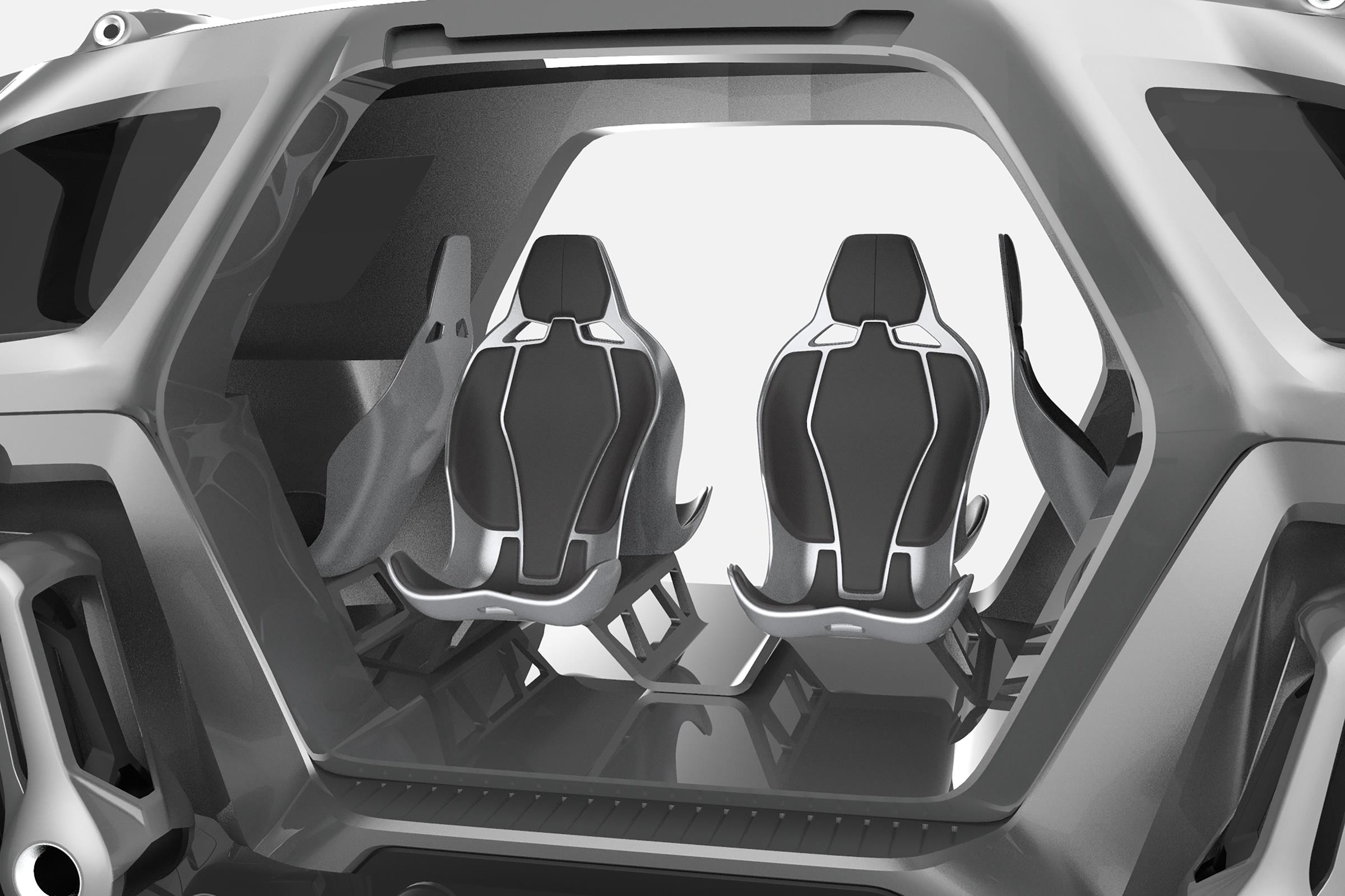
Hyundai has been working with Sundberg-Ferar, a Detroit-based innovation specialist, on the Elevate Concept for almost three years. Elevate is part of various ‘Last-Mile’ technologies and solutions programmes that also possesses ‘Last-100 Feet’ capability.